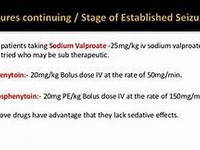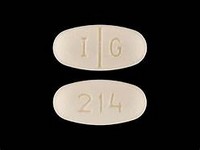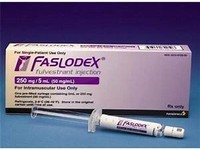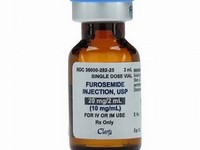Etoposide
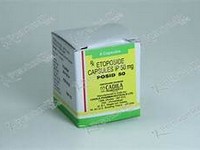
Etoposide
CLINICAL USE
Antineoplastic agentDOSE IN NORMAL RENAL FUNCTION
IV: 60–120 mg/m2 daily according to local protocolOral: Twice the relevant IV dose should be given daily according to local protocolPHARMACOKINETICS
DOSE IN RENAL IMPAIRMENT
GFR (mL/MIN)
60 85% of dose45–60 80% of dose and see ‘Other Information’30–45 75% of dose and see ‘Other Information’< 30 50% of dose, based on clinical response and see ‘Other Information’DOSE IN PATIENTS UNDERGOING RENAL REPLACEMENT THERAPIES
IMPORTANT DRUG INTERACTIONS
Potentially hazardous interactions with other drugsADMINISTRATION
Reconstition
5–10 mL of infusion fluid or water for injectionRoute
Oral, IVRate of Administration
IV infusion
: 5 minutes – 3.5 hoursComments
Dilute with sodium chloride 0.9% or glucose 5% to give a solution concentration as low as 100 mcg/mL of etoposideOTHER INFORMATION
Avoid skin contact Liver metabolised, yielding inactive metabolites. Approximately 45% of an administered dose is excreted in the urine, 29% being excreted unchanged in 72 hrs. Up to 16% is recovered in the faecesOne study suggested that patients with serum creatinine >130 µmol/L require a 30% dose reduction. (Joel S, Clark P, Slevin M. Renal function and etoposide pharmacokinetics: is dose modification necessary? Am Soc Clin Oncol. 1991; 10: 103) This dose adjustment was calculated to result in equivalent total dose exposure in patients with reduced renal function. Patients with a raised bilirubin and/or decreased albumin may have an increase in free etoposide and hence greater myelosuppressionReaches high concentration in kidney: possible accumulation in renal impairmentPlasma clearance is reduced and volume of distribution increased in renal impairmentKintzel PE, Dorr RT. Anticancer drug renal toxicity and elimination: dosing guidelines for altered renal function. Can Treat Rev. 1995; 21: 33–64. – provides dose modifications listed in ‘dose in renal impairment’Has been used without any problems in a haemodialysis patient, using a dose .290 EToPosidEthat increased gradually to 250 mg per treatment. (Holthius JJM, Van de Vyver FL, Van Oort WJ, et al. Pharmacokinetic evaluation of increased dosages of etoposide in a chronic haemodialysis patient. Cancer Treat Rep. 1985; 69(11): 1279–82.)Bristol-Myers Squibb advise giving 75% of dose if GFR is 15–50 mL/min.
See how to identify renal failure stages according to GFR calculation
See how to diagnose irreversible renal disease
Home


